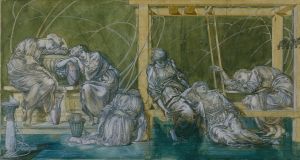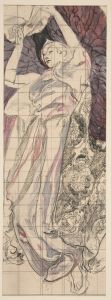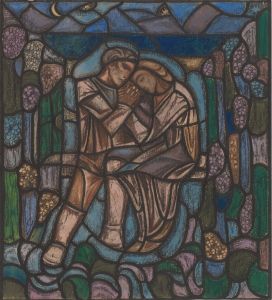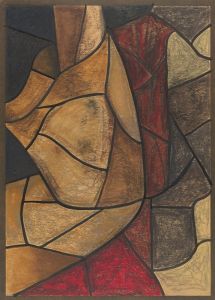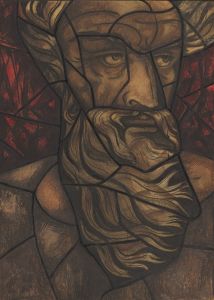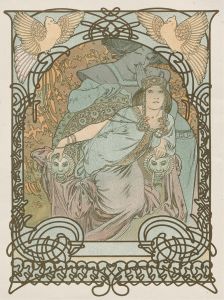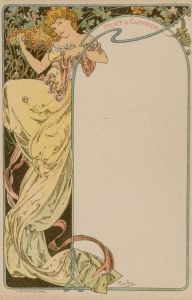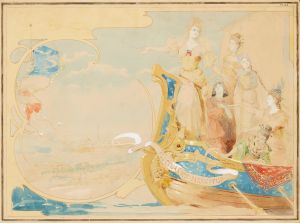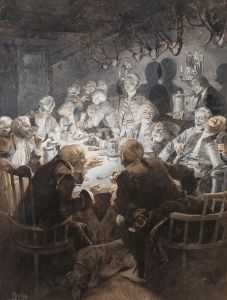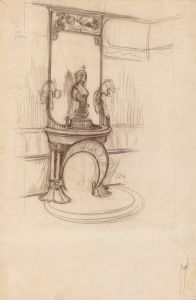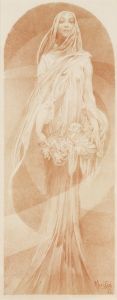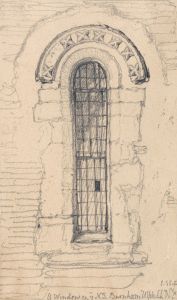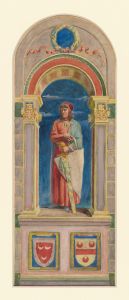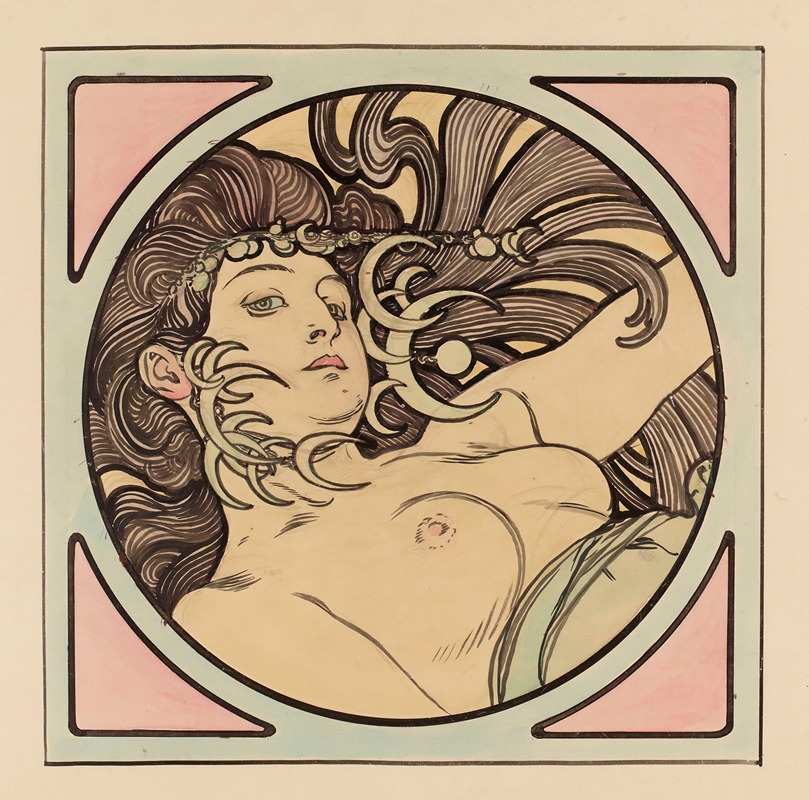
Vitrail pour la façade de la boutique Fouquet
A hand-painted replica of Alphonse Mucha’s masterpiece Vitrail pour la façade de la boutique Fouquet, meticulously crafted by professional artists to capture the true essence of the original. Each piece is created with museum-quality canvas and rare mineral pigments, carefully painted by experienced artists with delicate brushstrokes and rich, layered colors to perfectly recreate the texture of the original artwork. Unlike machine-printed reproductions, this hand-painted version brings the painting to life, infused with the artist’s emotions and skill in every stroke. Whether for personal collection or home decoration, it instantly elevates the artistic atmosphere of any space.
Alphonse Mucha, a renowned Czech artist, is best known for his distinctive style that became synonymous with the Art Nouveau movement. His work, "Vitrail pour la façade de la boutique Fouquet," is a notable example of his artistic contribution to decorative arts, particularly in the context of commercial architecture.
The piece was created as part of a larger commission for the renowned Parisian jeweler Georges Fouquet. In 1901, Fouquet decided to open a new boutique on the Rue Royale in Paris, and he enlisted Mucha to design the entire interior, including the façade. This collaboration was a significant event in the Art Nouveau movement, as it brought together two prominent figures of the time: Mucha, with his flowing, ornate designs, and Fouquet, with his exquisite jewelry craftsmanship.
"Vitrail pour la façade de la boutique Fouquet" was a stained glass design intended to adorn the storefront. Mucha's design for the stained glass was in harmony with the overall aesthetic of the boutique, which featured intricate mosaics, sculpted woodwork, and elegant metalwork. The stained glass would have contributed to the luxurious and inviting atmosphere of the shop, drawing in customers with its vibrant colors and intricate patterns.
Mucha's design style is characterized by its use of sinuous lines, floral motifs, and a harmonious color palette, all of which are evident in the stained glass work for Fouquet's boutique. His work often featured idealized female figures, surrounded by lush, decorative elements, which became a hallmark of the Art Nouveau style. Although specific details of the stained glass design for the Fouquet boutique are not extensively documented, it is likely that Mucha incorporated these signature elements into the piece.
The collaboration between Mucha and Fouquet was not just a commercial endeavor but also a reflection of the broader cultural and artistic trends of the time. The Art Nouveau movement sought to break away from the historical styles that had dominated the 19th century, emphasizing instead a return to craftsmanship and the integration of art into everyday life. Mucha's work for Fouquet exemplifies this philosophy, as it transformed a commercial space into a work of art.
Unfortunately, the original boutique no longer exists in its original form, as it was dismantled in 1923. However, the interior, including Mucha's designs, was preserved and later reconstructed in the Carnavalet Museum in Paris, where it remains a testament to the artist's vision and the Art Nouveau movement.
In summary, "Vitrail pour la façade de la boutique Fouquet" by Alphonse Mucha represents a significant intersection of art and commerce during the early 20th century. It highlights Mucha's role in the Art Nouveau movement and his ability to elevate commercial spaces through his artistic vision. While the original stained glass may not be fully intact today, its legacy continues through the preserved elements of the Fouquet boutique, offering insight into the artistic innovations of the period.





